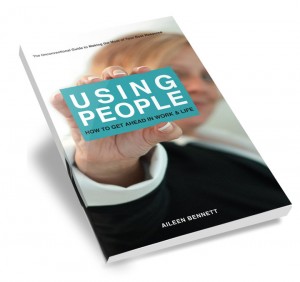When I meet with potential clients for the first time, they often ask how to get customers to their website. I’ve come to realize it’s just not common knowledge for business owners. When you’re thinking about how to get paying customers in the front door – sending them somewhere else just isn’t typical.
But it should be!
So, ask yourself this “why do you want to know?”. That’s the first question. And the answer is ‘because . . . ” Now, replace the elipsis with your reason. You want your customers to go to your website because. . . . what? let’s brainstorm some ideas:
[stextbox id=”info” bgcolor=”9dbde5″]
a. you want them to buy more products there
b. you think they’ll use you more if they read your bio
c. you want them to get on your e-mail list
d. you paid money for a website and you want someone to see it.
[/stextbox]
This is the first step in figuring out how to get your customers to your website. Without a reason, a goal or a purpose in mind – what is your return going to be from that traffic? And without a reason that benefits the customer – who’s going to take the time?
The key from moving them from the chairs in your restaurant to the pages of your website lies entirely on the benefit they are going to receive by doing so. So let’s brainstorm some good reasons why you want customers to your site:
[stextbox id=”info” bgcolor=”#9dbde5″]
a. they’ll save money when they receive discounts and special offers unavailable elsewhere
b. they’ll save time not waiting in line when they receive “inside information” about upcoming offers before the general public knows.
c. they’ll be able to win free somethings by partaking in the fun contests
d. they’ll get questions answered sooner because of the active forum of employees, customers and fans
e. their next visit will be more enjoyable because of the good response and implementation rate the “web suggestion box” gets.
[/stextbox]
This list is entirely different from the first list because these are some possible benefits your customers will receive when they get there. The first list, and the one I hear most, is really more about you – not them. Now that your thinking cap is spinning around because this opens up so many ideas, here’s the nitty gritty ways to get it done.
First you now have a message, correct? Let’s start getting the word out about our message. How about adding the language to the bottom of the cash register receipt? Perhaps a business card fish bowl (virtual or real) so you can reply to them with the message? Table Tents? The back of your business card? Billboards? Printed on your check-out bags?
Now that you have a message, do you think it will be hard to interject that into conversation? Add it as your e-mail footer? Put it on your answering machine? Is this message simple enough to send it via postcard? Direct phone calls? On the invoice itself?
What we do with the traffic once it gets to the website – well, that’s another post. And now that you have a message – what we do with the traffic has just become the most important question.
The question of “how do we get our customers to our website”. . . I hope you feel the same way I do – that’s for novices. With a good message your customers appreciate, you’ll be hard-pressed to stop coming up with ideas.

 My wife brought home giant marshmallows this past weekend. Seriously, they’re giant – the size of 4 marshmallows perhaps. When my kids saw those – all I heard from them for the next 2 days was “can we make s’mores?” I don’t know when marshmallows were invented, but for at least the last 25 years there’s been 2 sizes: regular and hot chocolate size. That’s it.
My wife brought home giant marshmallows this past weekend. Seriously, they’re giant – the size of 4 marshmallows perhaps. When my kids saw those – all I heard from them for the next 2 days was “can we make s’mores?” I don’t know when marshmallows were invented, but for at least the last 25 years there’s been 2 sizes: regular and hot chocolate size. That’s it.




